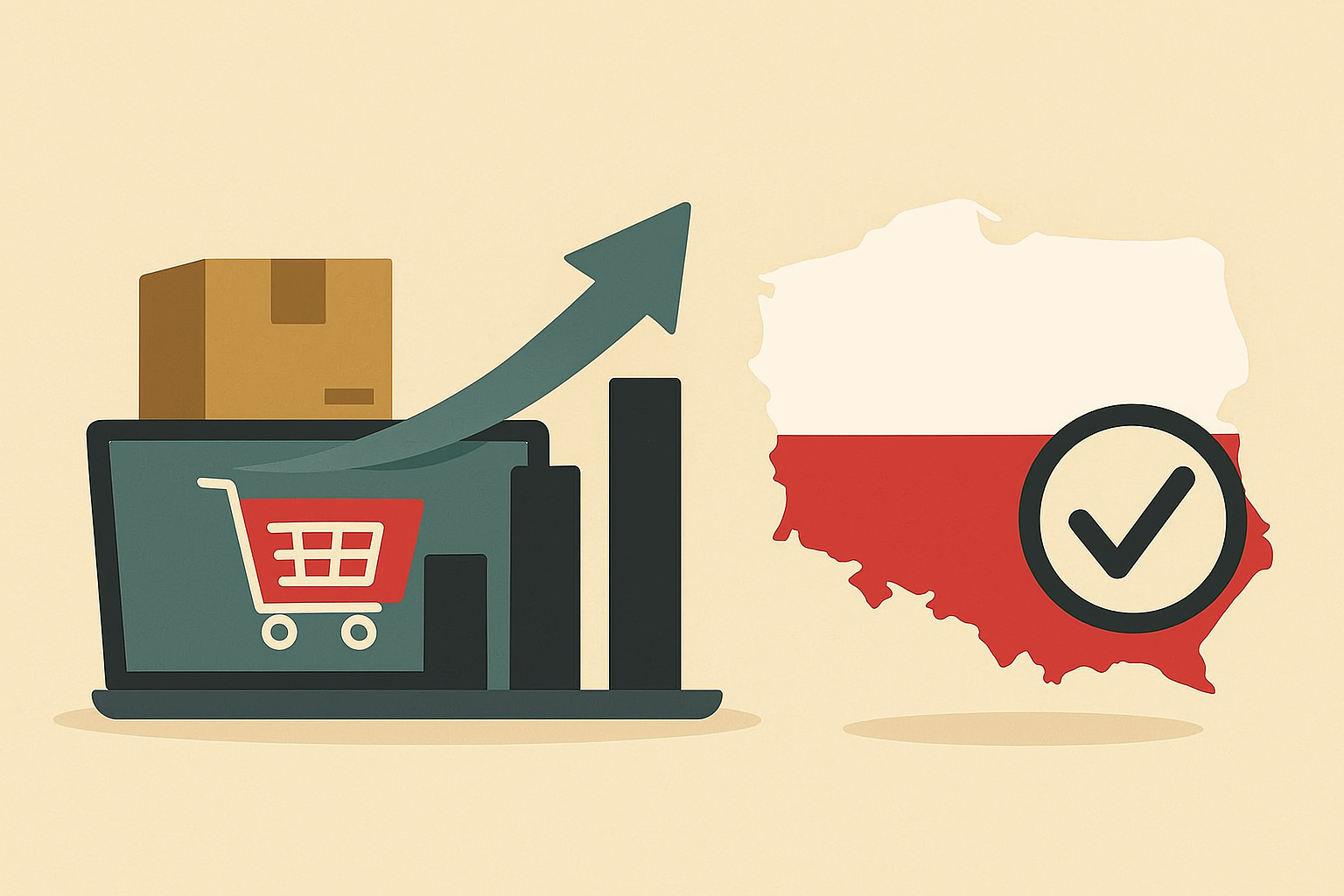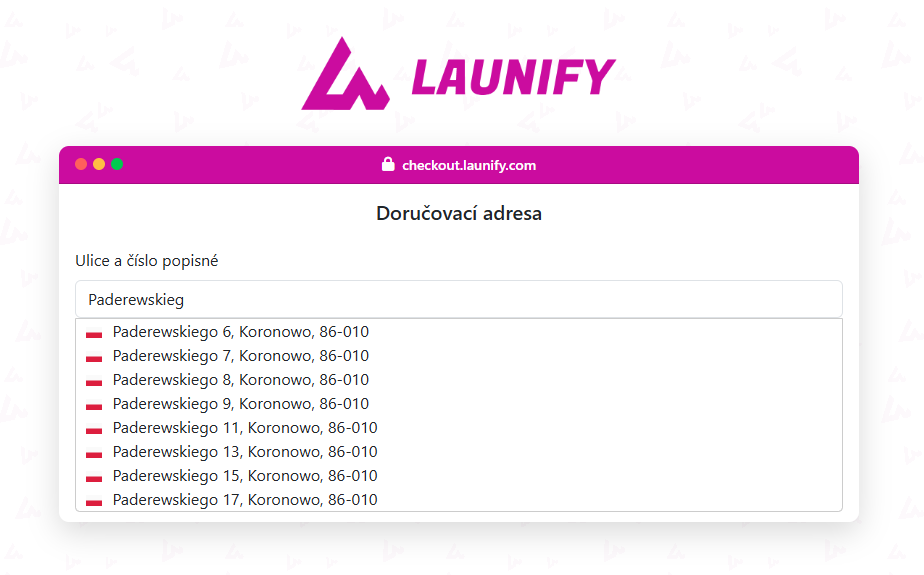Article
E-shop Expansion: What to Focus on in Poland
Poland, our largest neighbor, is a country with over 38 million inhabitants and one of the fastest-growing economies in Central Europe. It represents enormous potential for e-shop owners looking for new markets. Although Polish consumers may be more conservative in some respects, the popularity of online shopping is steadily increasing, along with opportunities for foreign players.

Published on: 5.6.2025 • Written by: Team Launify Reading Time: 15 min
Basic Information About the Polish Market
Let's look at some key figures that characterize the Polish market:
- Population: More than 38 million.
- GDP: In 2018, it reached EUR 525.8 billion, with an estimate of EUR 532.43 billion for 2019.
- GDP per capita: In 2018, it was EUR 13,848, with an estimate of EUR 14,026 for 2019.
- Annual GDP growth: 5.1%.
- Internet usage rate: In 2019, it was 70% of the population (approximately 26.5 million), with an expected increase to 78% by 2023.
- E-commerce turnover: In 2019, it reached EUR 8.581 billion and is expected to reach EUR 13.35 billion by 2023. The e-commerce sector is growing by 16% year-on-year.
- Number of active e-shops: Approximately 24,000.
- Currency: Polish Zloty (PLN).
Specifics of the Polish Customer and Most Popular Product Categories
Polish online customers are most often young people aged 25 to 34, with women making up 54%. The majority of them (44%) live in cities with 200,000 inhabitants. Although the so-called ROPO effect (Research Online – Purchase Offline) is still present, especially for construction materials and pharmaceutical products, the opposite trend is more common for cosmetics and fashion.
Regarding product categories, Poles most often buy the following online:
- Fashion: Accounts for an estimated 30.9% of Polish e-commerce volume.
- Electronics
- Food and hygiene
- Furniture
- Toys
A typical Polish customer spends an average of EUR 326 per year on online purchases. They are very price-sensitive, and low price is an important criterion for 76% of customers. You can motivate them to buy with discounts, promotions, and low shipping costs.
Payment and Delivery Methods
Even though Poland, unlike most EU countries, still uses its national currency, the Zloty (PLN), modern payment gateways can easily handle this.
Most popular payment methods (by popularity):
- Payment card (44%): Although a slight decrease is expected in the future, it is still the dominant method.
- Online bank transfers: Local services such as PayU, Przelewy24, and Dotpay dominate here. Preferences may change after the launch of ApplePay.
- Cash on delivery (Payment upon receipt): Although not explicitly mentioned as a top preference, it is generally still popular in more conservative markets.
Most popular delivery methods:
Polish customers are very sensitive to shipping costs, so it is important to offer efficient and affordable options.
- Collection points: These are very popular with Poles. Popular ones include InPost and DPD Pickup.
- Courier services: Companies such as DHL, UPS, FedEx, and GLS are often used.
- Polish Post (Poczta Polska): The state service is accessible and cost-effective.
Tip: Despite the gradual building of openness, there is still some mistrust towards foreign entities in Poland. It is helpful to have a physical store or collection point available, which will serve not only for sales but also for product complaints and building credibility.
Pay Attention to Polish Laws and Product Returns
When expanding into Poland, it is crucial to ensure accurate translations of contracts, terms and conditions, invoices, and other necessary documents. These translations must meet the requirements of the Polish legal system, so cooperation with professional translators is recommended.
Product returns (withdrawal from the contract): As in other EU countries, in Poland, the consumer has the right to withdraw from the contract within 14 days of receiving the goods without giving a reason. It is important to have transparent and clear terms and conditions regarding the return of goods, which are in accordance with Polish legislation. Communicating the return process in the local language is essential.
Local Comparison Shopping Engines and Marketing
For successful expansion, it is essential to adapt to the Polish market. This means not only high-quality localized content on a Polish domain (.pl) in flawless Polish but also understanding local marketing specifics.
Local comparison shopping engines and marketplaces:
In addition to global giants like Amazon, local platforms are successful in Poland:
- Allegro.pl: With 192 million visits per month, it is the most popular online shopping platform in Poland and has more than a 50% market share.
- Ceneo.pl: The most popular Polish price comparison engine with 46 million visits per month. It cooperates with more than 17,000 e-shops and offers over 1.2 million products.
- Empik.com: Another popular regional marketplace.
- Euro.com and Mediaexpert: Popular for selling consumer electronics.
Marketing and social networks:
- Localized content: Include Polish traditions, culture, and references to well-known places.
- Seasonal events: Respond to Polish holidays and significant days, especially Christian holidays (Easter, Christmas) and name days, which Poles celebrate very intensely.
- Social networks: Use popular Polish social networks such as Facebook (20 million users) and Instagram. Poles consider an e-shop trustworthy if they can communicate with it through social networks.
- Reviews: Polish customers often rely on reviews of satisfaction with purchases on your e-shop when making a purchase.
Conclusion
The Polish e-commerce market offers significant opportunities for Czech e-shop owners. Although it has its specifics and requires careful preparation and localization, geographical and, to some extent, cultural proximity can facilitate expansion. With a thorough market analysis, the right marketing strategy, and an understanding of local preferences, Poland can become a key market for your growth.


